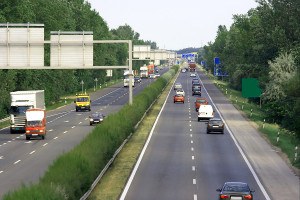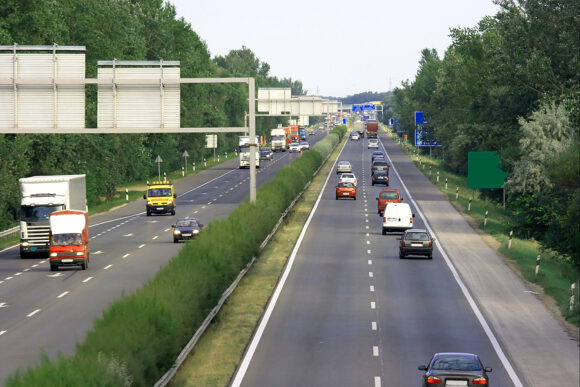The nation’s decades-long campaign to combat drunk driving continues to make our roads safer, but use of marijuana and prescription drugs is increasingly prominent on the highways, creating new safety questions, according to two studies released by the Department of Transportation’s National Highway Traffic Safety Administration.
One study, the latest version of NHTSA’s Roadside Survey of Alcohol and Drug Use by Drivers, found that the number of drivers with alcohol in their system has declined by nearly one-third since 2007, and by more than three-quarters since 1973.
But the same survey found a large increase in the number of drivers using marijuana or other illegal drugs. In the 2014 survey, nearly one in four drivers tested positive for at least one drug that could affect safety.
A one-third reduction in alcohol use over just seven years “shows how a focused effort and cooperation among the federal government, states and communities, law enforcement, safety advocates and industry can make an enormous difference,” said NHTSA Administrator Mark Rosekind.
However, Rosekind said, the survey raises “significant questions about drug use and highway safety. The rising prevalence of marijuana and other drugs is a challenge to everyone who is dedicated to saving lives and reducing crashes.”
The National Roadside Survey, conducted five times over the last 40 years, is a voluntary, anonymous survey that gathers data in dozens of locations across the country from drivers who agree to participate.
The reports are consistent with another study released in June by Public Health Reports. This study found that since 1993, the profile of a drugged driver has changed substantially.
More drivers are now testing positive for prescription drugs, cannabis, and multiple drugs, and they are more likely to be older than 50.
“While we’ve seen a decrease over the years in motor vehicle fatalities involving people under the influence, the nature of those crashes is changing,” said the Public Health Reports study author, Fernando Wilson, PhD, associate professor at the University of Nebraska Medical Center.
Wilson found that the percentage of drugged drivers with three or more drugs in their system nearly doubled from 1993 to 2010, increasing from 11.5 percent to 21.5 percent.
Alcohol Use Declines
The latest edition of the NHTSA survey shows that the prevalence of alcohol use by drivers continues to drop. About 8 percent of drivers during weekend nighttime hours were found to have alcohol in their system, and just over 1 percent were found with 0.08 percent or higher breath alcohol content – the legal limit in every state. This is down by about 30 percent from the previous survey in 2007 and down 80 percent from the first survey in 1973.
But even as drinking and driving continues to fall, use of illegal drugs or medicines that can affect road safety is climbing. The number of weekend nighttime drivers with evidence of drugs in their system climbed from 16.3 percent in 2007 to 20 percent in 2014. The number of drivers with marijuana in their system grew by nearly 50 percent.
A second survey, the largest of its kind ever conducted, assessed whether marijuana use by drivers is associated with greater risk of crashes. The survey found that marijuana users are more likely to be involved in accidents, but that the increased risk may be due in part because marijuana users are more likely to be in groups at higher risk of crashes. In particular, marijuana users are more likely to be young men – a group already at high risk.
This was a controlled study that measured the risk associated with marijuana at the levels found among drivers in a large community. Other studies using driving simulators and test tracks have found that marijuana at sufficient dosage levels will affect driver risk.
“Drivers should never get behind the wheel impaired, and we know that marijuana impairs judgment, reaction times and awareness,” said Jeff Michael, NHTSA’s associate administrator for research and program development.
The study, conducted in Virginia Beach, Va., gathered data over a 20-month period from more than 3,000 drivers who were involved in crashes, as well as a comparison group of 6,000 drivers who did not crash. The study found that drivers who had been drinking above the 0.08 percent legal limit had about 4 times the risk of crashing as sober drivers and those with blood alcohol levels at 0.15 percent or higher had 12 times the risk.
Source: NHTSA
Was this article valuable?
Here are more articles you may enjoy.


 Tesla Drivers Are Buying Escape Tools and Cars to Avoid Getting Trapped Inside
Tesla Drivers Are Buying Escape Tools and Cars to Avoid Getting Trapped Inside  Instacart to Pay $60 Million in FTC Consumer Protection Case
Instacart to Pay $60 Million in FTC Consumer Protection Case  Jump Trading Faces $4 Billion Terraform Administrator Suit
Jump Trading Faces $4 Billion Terraform Administrator Suit  Flooding in California Leads to Soaked Roads, Water Rescues and 1 Death
Flooding in California Leads to Soaked Roads, Water Rescues and 1 Death 